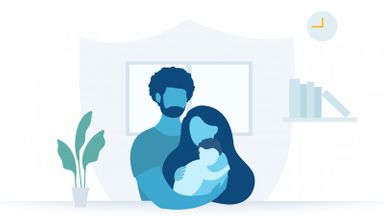What Is the Child Tax Credit and How Does It Work?

What is the child tax credit?
Kids are expensive. But there’s at least one place where junior is worth some money: your taxes. The child tax credit offers a break to most families with children under 17.
How much is the child tax credit?
In both 2022 and 2023, the maximum child tax credit is $2,000 for each child under 17. Since it’s a credit and not a deduction (which reduces your taxable income), if you owe $10,000 in taxes, by claiming the credit you only have to pay $8,000.
Up to $1,500 of the credit can be refundable, meaning the amount you receive as a refund can be more than the amount you’ve paid in taxes during the year. For example, if you have two qualifying children, your child tax credit adds up to $4000. If you owe $3000 in taxes, you would receive a $1000 refund.
Who can claim the child tax credit?
You can qualify for the child tax credit child if your annual income does not exceed $200,000 ($400,000 if filing jointly). If your income is over the threshold, you may be able to claim a partial credit.
You must also meet certain eligibility requirements. The child typically must:
-
Be under age 17 by year-end.
-
Have not provided more than half of the own monetary support throughout the year.
-
Have lived with you for more than half the year.
-
Not have filed a joint tax return (unless they're filing to get a refund of income that's been withheld or estimated taxes they've paid), or provide over half of their own monetary support throughout the year.
-
Be a son, daughter, stepchild, foster child, brother, sister, half-brother, half-sister, stepbrother, stepsister, or descendant of one of these (such as a grandchild or niece).
-
Be a U.S. citizen, U.S. national, or U.S. resident alien.
Let’s create your financial plan.
Our advisors will walk you through what to do next — and will be there every step of the way.
Let's talkHow to claim the child tax credit
If you're claiming the child tax credit, you will need to fill out your form 1040 (your individual tax return) and include a completed Schedule 8812 (credits for qualifying children and other dependents).
If you're using software to file, this typically leads you through the steps of claiming the child tax credit with a series of questions.
What if I’m divorced?
Only one parent can claim a child tax credit per child. This would typically be the custodial parent, the one that the child has lived more than half the year with. However, a custodial parent can use Form 8332 and sign a written declaration to allow the non-custodial parent to claim the child on his or her taxes.
Are there any other tax credits available to families?
Depending on your financial situation, you may also qualify for these other tax credits:
-
Child and dependent care credit, if you paid qualifying caregiving expenses that allow you or your spouse to work or look for work.
-
Adoption credit and adoption assistance programs, if you paid certain adoption expenses, including adoption fees, attorney fees, travel expenses, and more.
-
Earned income tax credit, if your income is below a certain threshold (this number changes depending on how many dependents you have, among other factors).
-
Education credits, if you, your dependent, or a third party (such as a lender), pay qualifying higher education expenses.
This publication is not intended as legal or tax advice. Northwestern Mutual and its financial representatives do not give legal or tax advice. Taxpayers should seek advice regarding their particular circumstances from an independent legal, accounting, or tax advisor. Tax and other planning developments after the original date of publication may affect these discussions.


Want more? Get financial tips, tools, and more with our monthly newsletter.

What New Parents Need to Know About Their Finances

Life Insurance Guide

How Much Do You Know About Financial Planning?

Here Are the New 2025 Tax Brackets and How They Work

How Much Does It Cost to Raise a Child?



